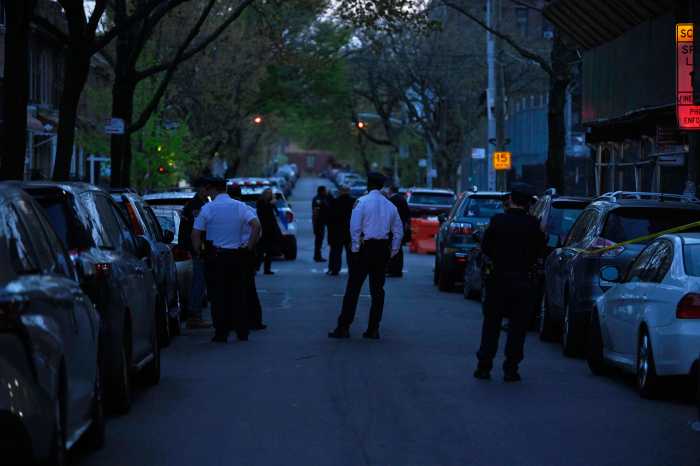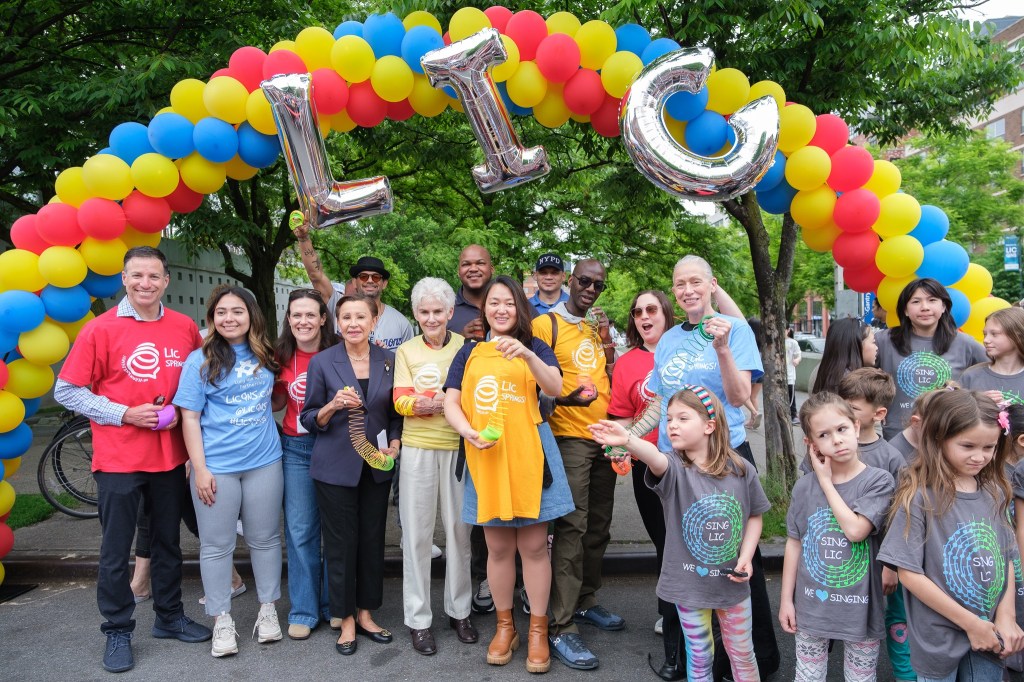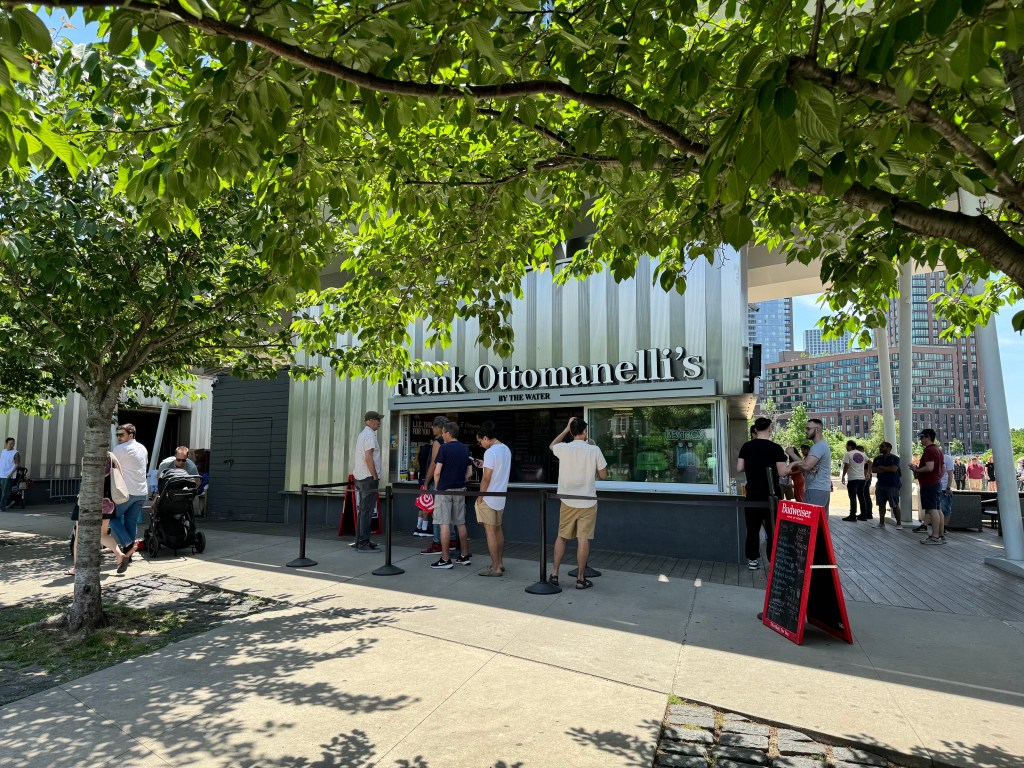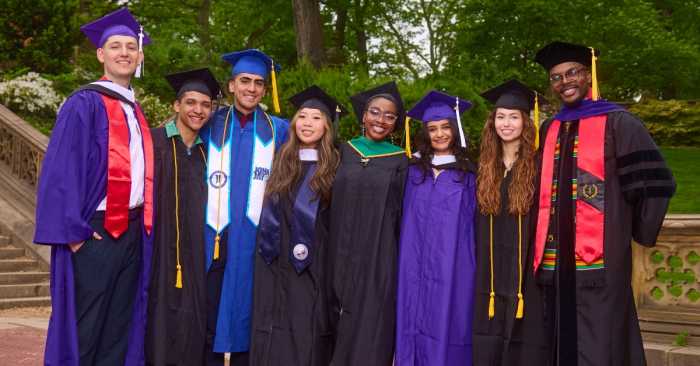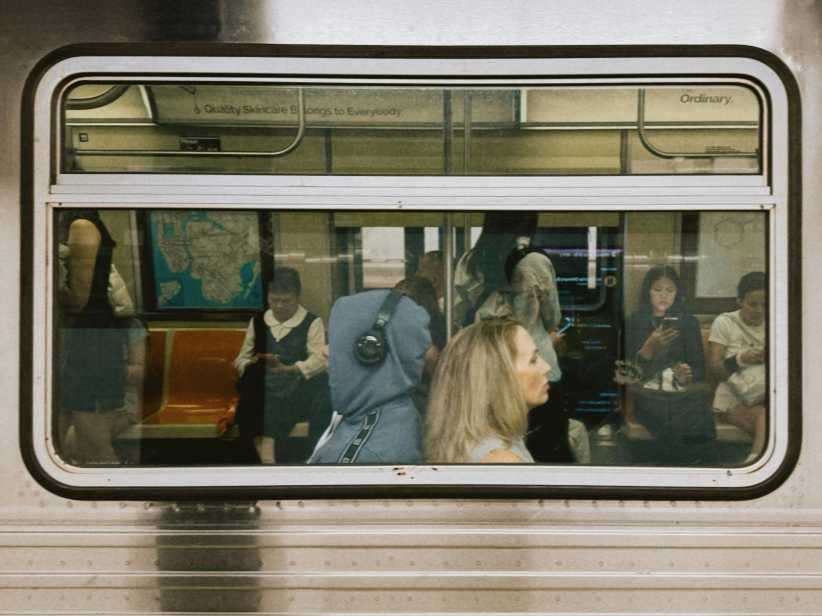Trees First To Go Down For Bridge Project
Numerous trees on both sides of the Newtown Creek are being timbered in preparation of the Kosciuszko Bridge reconstruction project’s impending start.
In a Mar. 14 letter to Community Board 5 and forwarded to the Times Newsweekly, the state Department of Transportation (DOT)’s project manager, Robert Adams, stated that 130 trees within the work site will be cut down by the end of the month.
The majority of the condemned trees lie within the footprint of a new cable-stayed suspension bridge to be erected on the southern side of the existing span during the project’s first phase.
According to Adams, the DOT will also timber 30 street trees along Cherry Street and Vandervoort Avenue to accommodate the realignment of both roadways while the project is underway. Another 15 street trees along Meeker Avenue between Kingsland and Varick avenues will also be cut down to make room for a temporary bridge.
The state DOT has yet to select a design-build team to handle the project, a $550 million endeavor to replace the obsolete, 74-year old steel span with twin cable-stayed bridges carrying the Brooklyn-Queens Expressway across the Newtown Creek.
Once a firm is selected, Adams stated, the DOT will hold a meeting with the Kosciuszko Bridge Stakeholders Advisory Committee (SAC)-a panel of community activists in Brooklyn and Queens involved with the project for more than a decade.
“That SAC meeting will be followed by public meetings in both Brooklyn and Queens well in advance of the start of significant construction operations,” Adams wrote.
Opened in 1939 as a Works Progress Administration project during the Great Depression, the Kosciuszko Bridge originally linked Meeker Avenue in Greenpoint with Van Dam Street in Long Island City. The bridge was later incorporated into the Brooklyn-Queens Expressway when it was developed during the 1950s.
By design, the bridge was never meant to accommodate the heavy amount of traffic the expressway constantly handles, and decades of wear and tear exacted a toll on the span, leading to frequent maintenance work.
The configuration of the roadway itself-with six lanes in the center span and eight lanes on the approaches-results in regular traffic jams and accidents.
Once the first cable-stayed bridge is completed, all expressway traffic will be temporarily shifted to the new span. The old bridge will then be torn down, and a second cable-stayed bridge will be erected in its footprint during the second phase of the project.
Upon completion, the second bridge will be used for westbound traffic, and the first for eastbound vehicles.
Throughout the project, the DOT will also fund improvements to the streetscapes on both sides of the creek, including the formation of new public parks.
Expedited through the NY Works program, it is anticipated that the project will be completed within five years.

